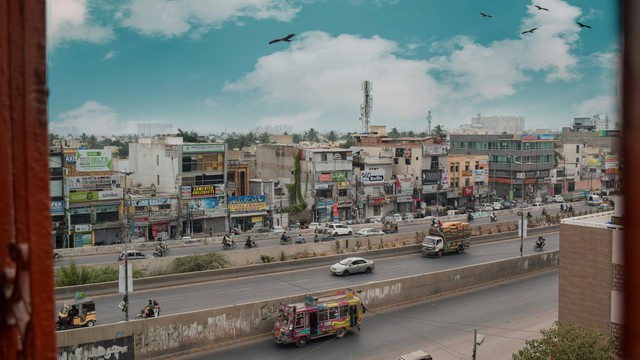To stay ahead of climate change, cities need to act now
How can cities in low- and middle-income countries address climate change risks? IIED's David Satterthwaite looks at the challenges facing city governments across the world.


Upgrading informal settlements like Kisenyi in Kampala can help mitigate climate risks - but managing the process can be a challenge for city authorities (Photo: Slum Dwellers International, CC BY 2.0)
New agendas are being added to city governments’ roles and responsibilities that have high importance and urgently need action – for instance climate change adaptation, low-carbon cities and disaster risk reduction.
But most city governments are hard pressed to meet existing responsibilities. They cannot see how resources can be found to act on the new agendas. This is especially true for most city governments in low- and middle-income nations that are faced with massive backlogs in, for example, provision for piped water, good quality sanitation and drainage, electricity and other public services suh as schools, health care and emergency services
A policy win-win
There is an obvious need to reconcile different urban agendas: for economic success; for poverty reduction/basic service provision; for disaster risk reduction – and for climate change adaptation and mitigation.
Although there are tensions between these policy priorities and often competition for resources, there are also some obvious commonalities. For instance, poverty reduction, disaster risk reduction and climate change adaptation all share a focus on identifying and acting on local risks and their root causes, even if they have different lenses through which to view risk.
There are significant overlaps between these urban agendas, which are usually the responsibility of different departments within city governments. They usually compete for funds. But a large part of disaster risk reduction is improving housing quality and addressing resilience issues for infrastructure.
Climate change adaptation should build on disaster risk reduction – but adding attention to the changing risks that climate change is bringing or will bring. And given the urgency to keep global temperatures below the 1.5°C rise, all departments within city governments need to consider what they can contribute to lowering greenhouse gas emissions.
Now is the time to act
There are many city governments demonstrating what is possible in integrating these agendas – for instance with community-led upgrading of informal settlements that meets residents’ needs, reduces disaster risks and builds greater resilience to climate change.
Cities such as Rosario in Argentina and Manizales in Colombia have showed the importance of democratic processes and of land use management. Expanding serviced land for new housing can include attention to low-carbon development and to watershed protection.
But both low-carbon and climate-resilient urban development are likely to be inhibited by the same constraints that have hindered more conventional forms of development: weak city government and governance structures, scarce resources (including little investment capacity), constrained local powers, limited delivery capacities, political disinterest in the urban poor and the presence of multiple competing priorities.
Estimates for the additional annual costs of adaptation to climate change are in the tens or hundreds of billions of dollars – but it is not just an issue of funding, but of who gets the funding.
Most city governments in Africa and Asia and many in Latin America have little investment capacity and very large backlogs in what the Intergovernmental Panel on Climate Change (IPCC) calls risk-reducing infrastructure and services (including piped water, good quality sanitation and drainage, all-weather roads).
So the issue is how to support city governments to develop their capacity to address this backlog and integrate into this disaster risk reduction and attention to climate change – and learn from cities that have done so. And do so at scale.
For further reading, see Cities on a Finite Planet: Transformative Responses To Climate Change – by Sheridan Bartlett and David Satterthwaite (editors), Routledge. This book was prepared by a group of authors who had worked together on the IPCC’s Fifth Assessment and includes chapters about climate adaptation in Bangalore, Bangkok, Dar es Salaam, Durban, London, Manizales, Mexico City, New York and Rosario.
Read more about this book on the IIED Bookshelf.
This blog originally appeared on the apolitical website.



